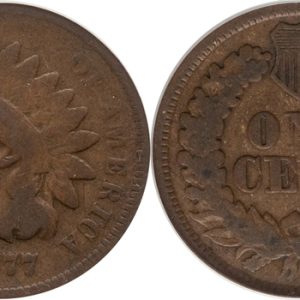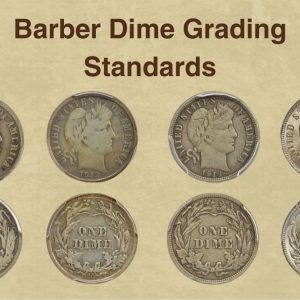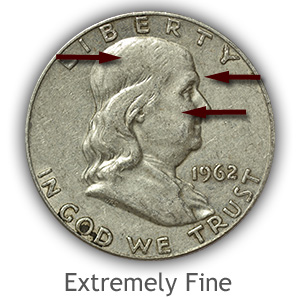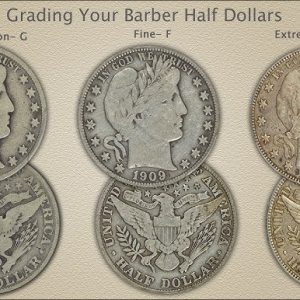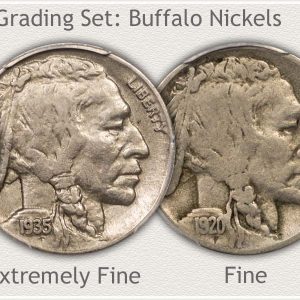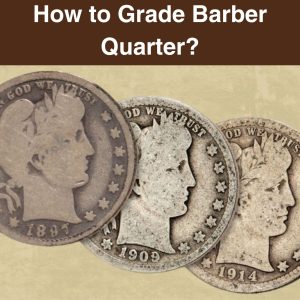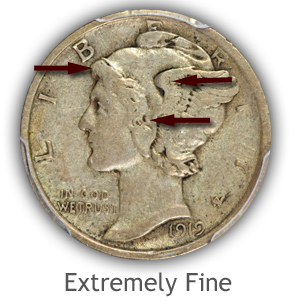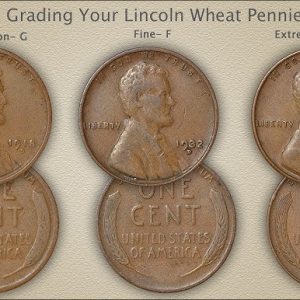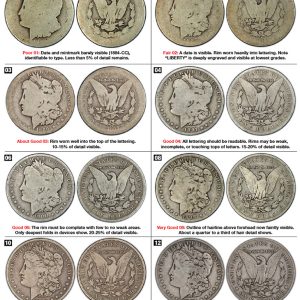To grade a Liberty Nickel, examine the obverse for wear on Liberty’s hair and crown, especially above the ear, and check the reverse for sharpness in the wreath details and large “V”. Uncirculated coins retain full mint luster with no wear on high points, while circulated grades show progressive flattening of details. Key grading points include hair definition around Liberty’s ear and forehead, wreath clarity including corn ears, and luster quality. Hold the coin at an angle to check for original shine. Use online grading guides like PCGS Photograde for comparison. Consider that some dates like 1883 “no CENTS” and 1912-D/S had weaker strikes that may appear more worn. Avoid cleaning coins as it significantly reduces value.
The Liberty Nickel, struck between 1883 and 1913, presents unique grading challenges that can mean the difference between a $5 coin and a $500 specimen. Unlike modern coins with simple wear patterns, Liberty Nickels require careful examination of specific design elements that reveal their true condition. Understanding how to properly assess hair detail and wreath sharpness will help you accurately determine grade and value—whether you’re building a collection or evaluating a potential purchase.
Understanding the Critical Grading Points
Liberty Nickels feature two primary areas that determine grade: the obverse portrait and the reverse wreath surrounding the large Roman numeral V. These zones wear at predictable rates, creating a roadmap for accurate grading.
On the obverse, Liberty’s hair contains multiple layers of detail that disappear progressively with circulation. The hair above and around her ear represents the highest point of the design, making it the first area to show friction. In Mint State (MS-60 and above), every individual hair strand remains sharply defined with full separation. The curl behind her ear displays complete detail, and the hair waves across her forehead show distinct lines. As the coin enters About Uncirculated (AU-50 to AU-58), slight flatness appears on these highest points while maintaining most detail elsewhere.
The reverse wreath presents equally important diagnostic features. Fresh from the mint, the corn ears within the wreath display individual kernels with sharp definition. The cotton bolls and wheat stalks show clear separation between elements. The large V maintains crisp, squared edges along its serifs. These details begin merging as wear progresses, eventually creating smooth, undefined areas in lower grades.
Examining Mint State Liberty Nickels
A true Mint State Liberty Nickel exhibits complete cartwheel luster flowing uninterrupted across both sides. This original mint surface appears frosty under proper lighting, with the texture intact from the striking process.
Hold the coin at a 45-degree angle under a single light source. An MS-65 example will display continuous luster rotation as you tilt it, with no breaks or dull spots. The hair detail appears razor-sharp, showing full strand separation even in the tightly-packed areas near the coronet. Each individual letter in LIBERTY stands fully raised with squared edges. The stars surrounding the portrait maintain complete radial lines extending to their points.
On the reverse, count the individual corn kernels in the ears—an MS-65 should show at least 15-20 distinct kernels per ear. The ribbon bow beneath the wreath displays clear separation between the loops and tails. The V’s serifs remain sharply angled, not rounded from circulation. Premium MS-67 examples command prices exceeding $2,500 for common dates, while MS-65 specimens typically range from $250 to $600 depending on the year and mint mark.
Beware of weak strikes that mimic wear. The 1883 “no CENTS” variety frequently shows soft hair detail even in uncirculated condition due to die spacing issues at the Philadelphia Mint. Similarly, 1912-D and 1912-S coins often exhibit incomplete strikes in the hair and wreath, particularly on the first strikes from fresh dies. Compare multiple areas rather than judging from a single feature.
Identifying About Uncirculated Grades
About Uncirculated (AU-50 through AU-58) represents the transition zone where coins show minimal wear but have definitively left Mint State territory. This range proves most challenging for beginners because subtle differences in friction create significant value gaps.
An AU-58 Liberty Nickel retains perhaps 90% of its original luster, with small breaks visible only on the absolute highest points. Examine Liberty’s hair above the ear under magnification—you’ll notice slight flatness compared to the surrounding protected areas, but individual strands remain visible. The cheek shows full detail with perhaps a whisper of light friction. On the reverse, the corn ears maintain separation between most kernels, though the very tops may show slight merging.
AU-50 coins display more obvious wear while preserving major design elements. Approximately half the original luster remains, concentrated in the protected areas around letters and within the wreath. The hair above Liberty’s ear shows definite flattening, with strands beginning to merge into larger groups. The cheekbone exhibits light wear but maintains its rounded contour. Reverse wear becomes more apparent on the corn ear tops and the cotton bolls, which start losing their individual definition. The V remains sharp along its edges with only slight softening at the very tips of serifs.
The value difference between AU-58 and AU-50 can exceed 40% for scarcer dates. A 1912-S in AU-58 might bring $425, while the same date in AU-50 sells for $275—making accurate grade assessment financially significant.
Evaluating Extremely Fine Through Very Good
Extremely Fine (EF-40 and EF-45) coins show moderate wear but retain most major design elements clearly visible. At EF-45, Liberty’s hair shows wear across the highest waves but maintains separation between major curls. Individual strands have merged into broader groups, particularly above the ear, but the overall flow pattern remains distinct. The coronet band displays all letters in LIBERTY fully readable, though perhaps slightly weak at the center. Approximately 25% of original luster may survive in protected recesses around letters.
The wreath at EF-45 shows flattening on the corn ears, with kernels merging into smooth surfaces at the tops while lower portions retain some definition. The cotton bolls appear as raised lumps rather than detailed pods. The V maintains sharp edges throughout, though high point serifs show rounding. An EF-45 common date Liberty Nickel typically values between $8 and $35 depending on the specific year.
Fine (F-12) grade exhibits extensive wear with major design elements visible but significantly flattened. Liberty’s hair appears as broad, smooth waves with minimal internal detail. The word LIBERTY remains fully readable on the coronet band, which defines the minimum standard for Fine grade. Below this grade, letters begin disappearing. The wreath shows as a raised outline with internal details mostly merged into smooth surfaces. The corn ears appear as elongated ovals without kernel definition. Values for F-12 common dates range from $3 to $12.
Very Good (VG-8) coins show heavy wear with Liberty’s hair outline visible but almost entirely smooth. At least three letters in LIBERTY must remain readable—typically ERTY or IBER depending on wear pattern. The date must be complete and clear. The reverse wreath appears as a raised rim with minimal internal features beyond the basic outline shape. The V remains clear but with rounded edges throughout. Common dates in VG-8 typically sell for $2.50 to $5.
Professional Grading Versus Self-Assessment
While learning to grade Liberty Nickels yourself provides valuable knowledge, understanding when professional grading makes financial sense protects your investment. Third-party grading services like PCGS and NGC authenticate and encapsulate coins, providing market-recognized grades that enhance liquidity.
For common-date Liberty Nickels in circulated grades below EF-40, professional grading rarely makes economic sense. The $35-50 grading fee exceeds the value difference between adjacent grades. However, scarce dates, premium uncirculated examples, and coins you believe might grade MS-65 or higher warrant professional evaluation.
The 1885 Philadelphia issue, which had just 1,476,490 struck, commands significant premiums in higher grades. An MS-65 example sold for $3,840 at Heritage Auctions in 2023, while MS-64 specimens bring approximately $1,800. This $2,000 grade differential justifies the certification cost. Similarly, any 1912-S or 1913 Liberty Nickel (excluding the famous 1913 Liberty Head not issued for circulation) deserves professional authentication due to numerous counterfeits and altered dates in the marketplace.
Maximizing Your Grading Accuracy
Successful Liberty Nickel grading requires proper equipment and systematic methodology. Invest in a quality 5x to 10x loupe or magnifier—the $15-30 spent returns value through improved accuracy. Examine coins under consistent lighting, preferably a single adjustable desk lamp rather than overhead fluorescent fixtures that obscure luster.
Create a reference set by purchasing already-graded examples in key grade levels: Good, Very Fine, Extremely Fine, About Uncirculated, and Mint State if budget permits. PCGS and NGC graded coins provide reliable standards for comparison, though expect to pay 20-30% premiums over raw coins for the certification. Start with common dates from the 1900s where certified examples cost $40-150 depending on grade.
Practice the systematic approach: examine the obverse hair detail first, then the reverse wreath, then check luster, and finally assess strike quality. Compare your observations against reference photos from PCGS Photograde or NGC’s online resources. Grade conservatively when uncertain—overgrading costs money when selling, while conservative grading protects your buying decisions.
Remember that grading represents an opinion about condition, not an absolute measurement. Even professional graders sometimes disagree by one point on the 70-point scale. Focus on learning the characteristics of each grade range rather than obsessing over single-point differences. This knowledge transforms you from a passive collector into an informed numismatist capable of spotting undergraded opportunities and avoiding overpriced offerings.
You may be interested:
- 1911 V Nickel Coin Value Guide Complete Errors List And No Mint Mark Worth Today
- 1920 Buffalo Nickel Coin Value Complete Errors List And What Your D S And No Mint Mark Are Actually Worth
- 1923 Buffalo Nickel Coin Value Complete Errors List And S Mint Mark Worth Guide
- 1925 Buffalo Nickel Coin Value Complete Price Guide For D S No Mint Mark And Error Varieties Worth Thousands
- 1926 Buffalo Nickel Coin Value Complete Guide D S And No Mint Mark Worth Plus Errors List
- Complete 1927 Indian Head Buffalo Nickel Coin Value Guide D S No Mint Mark Errors List And Worth
- How To Grade Peace Silver Dollar Using The Sheldon Scale And Key Wear Areas
- How To Grade Walking Liberty Half Dollar Inspect High Points Luster And Wear For Accurate Assessment

